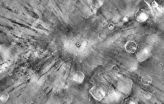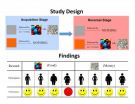(Press-News.org) PORTLAND, Ore. (July 16, 2014)—Thirteen scientists received a total of $1.05 million in funding from the National Psoriasis Foundation for projects that aim to identify new treatments and a cure for psoriasis—an autoimmune disease that appears on the skin, affecting 7.5 million Americans—and psoriatic arthritis—an inflammatory arthritis that affects the joints and tendons, occurring in up to 30 percent of people with psoriasis.
Learn more about the NPF research grant program: http://www.psoriasis.org/research.
This year, three scientists each received a two-year, $200,000 National Psoriasis Foundation Translational Grant to "translate" their laboratory findings into improved treatments and methods for managing psoriatic disease.
The Translational Grant recipients and their projects are:
Kevin Cooper, M.D., of Case Western Reserve University in Cleveland received the Dr. Alan Menter Translational Grant, named in recognition of one of the world's leading psoriatic disease experts. Cooper will determine whether systemic psoriasis treatments can reduce the risk for cardiovascular disease.
Lorena Riol Blanco, Ph.D., of Harvard Medical School will study how pain fibers drive the production of interleukin-23 (IL-23), a protein linked to inflammation, to find new therapies for psoriasis inflammation.
Michael Rosenblum, M.D., Ph.D., of the University of California, San Francisco, will examine the role of a special class of regulatory T-cells involved in suppressing inflammation, in people with psoriasis. He aims to discover why these cells function abnormally in psoriasis to develop treatments to repair them and treat psoriasis.
Additionally, 10 researchers each received a one-year, $75,000 Discovery Grant for early-stage psoriatic disease research.
The Discovery Grant recipients and their projects are:
Rachael Clark, M.D., Ph.D., of the Brigham & Women's Hospital at Harvard University, will study T-cells, which are involved in inflammation, that remain in healed psoriasis lesions and compare them to T-cells in the same patient's skin before treatment. Clark hopes to determine if these T-cells are the root cause of psoriasis.
Dan Illkovitch, M.D., Ph.D., of University of Pittsburgh Medical Center, received the Ostrow Graff Family Discovery Grant to study an immune cell called myeloid‐derived suppressor cells, which have not been extensively studied in psoriasis. He will examine the role that these cells play in psoriasis, and examine whether they are affected by psoriasis treatment.
Jaehwan Kim, M.D, Ph.D., of The Rockefeller University will develop a blood test that can predict a person's treatment response to a biologic drug for psoriasis.
Averil Ma, M.D., of University of California, San Francisco, will examine how reducing the expression of the A20 gene, previously implicated in the genetics of psoriasis, may increase psoriasis risk. Studying how A20 functions in psoriasis could lead to treatments that are better tailored for people with variations of A20.
Pranab Mukherjee, Ph.D., of Case Western Reserve University, received the Lozick Discovery Research Grant to study the role of the skin microbiome and mycobiome, or microorganisms and fungi on the skin, in the development of psoriasis.
Haley Naik, M.D., of the National Cancer Institute dermatology branch, will study neutrophils, or cells thought to be a unique link between psoriasis, heart disease and diabetes. Naik hopes to uncover more about the role of these cells in psoriasis and their relation to psoriasis severity and related health risks.
Brian Poligone, M.D., Ph.D., of University of Rochester School of Medicine, received the Galderma Discovery Grant to study NF-kappa B—a transcription factor, or protein that binds to DNA, that regulates inflammation in the body. He will investigate the role of NF-kappa B in triggering psoriasis, and explore ways to control its activity.
Eva Reali, Ph.D., of Istituto Ortopedico Galeazzi in Milan, received the A. Marilyn Sime Discovery Grant to study the connection between pro-inflammatory T-cells in psoriasis skin and joint inflammation of psoriatic arthritis. Reali will define distinctive characteristics of these cells to hopefully create a biomarker, or biological sign, for the development of psoriatic arthritis in psoriasis patients.
Jubin Ryu, M.D., Ph.D., of University of California, San Francisco, aims to develop a new method for delivering biologic drugs, currently administered through injection or infusion, via a skin patch to allow for localized, less invasive treatment.
1 Eric Sundberg, Ph.D., of University of Maryland School of Medicine, hopes to create novel molecules that suppress interleukin-36 (IL-36), a protein that drives inflammation. These molecules could lead to the development of a new, targeted psoriasis treatment.
INFORMATION:
About the National Psoriasis Foundation
National Psoriasis Foundation (NPF) is the world's largest nonprofit serving those with psoriasis and psoriatic arthritis. Our priority is to provide the information and services for people to take control of their condition, while increasing research to find a cure. In addition to serving more than 2.1 million people annually through our education and advocacy initiatives, NPF has funded more than $10 million in research grants and fellowships. Learn more about the Psoriasis Foundation at http://www.psoriasis.org or call 800-723-9166. Follow us on Facebook and Twitter.
Contact:
Noe Baker
National Psoriasis Foundation
800-723-9166, ext. 413
503.729.2919 (cell)
media@psoriasis.org
National Psoriasis Foundation awards $1.05 million in research grants
2014-07-16
ELSE PRESS RELEASES FROM THIS DATE:
70-foot-long, 52-ton concrete bridge survives series of simulated earthquakes
2014-07-16
VIDEO:
A 70-foot-long, 52-ton concrete bridge survived a series of earthquakes in the first multiple-shake-table experiment in the University of Nevada, Reno's new Earthquake Engineering Lab, the newest addition to the...
Click here for more information.
RENO, Nev. – A 70-foot-long, 52-ton concrete bridge survived a series of earthquakes in the first multiple-shake-table experiment in the University of Nevada, Reno's new Earthquake Engineering Lab, the newest addition to the ...
Dozens of fires plague Oregon
2014-07-16
Fires are a way of life during the hot, dry summer days, but that does not mean they are ever taken for granted. Thousands of lightning strikes Sunday (7/13) and early Monday (7/14) probably started most of the wildfires, which are burning on private, public and reservation land. Dozens of fires are plaguing the forest areas in the state of Oregon. In this image, are shown the Buzzard Fire, the Shaniko Butte fire, the Bridge 99 Complex fire, and the Saddle Draw Fire.
The Buzzard Complex fire began as a lightning strike. Difficult terrain, combined with extremely dry ...
Arizona State University, US Geological Survey project yields sharpest map of Mars surface properties
2014-07-16
Tempe, Ariz. -- A heat-sensing camera designed at Arizona State University has provided data to create the most detailed global map yet made of Martian surface properties.
The map uses data from the Thermal Emission Imaging System (THEMIS), a nine-band visual and infrared camera on NASA's Mars Odyssey orbiter. A version of the map optimized for scientific researchers is available at the U.S. Geological Survey (USGS).
The new Mars map was developed by the Geological Survey's Robin Fergason at the USGS Astrogeology Science Center in Flagstaff, Ariz., in collaboration ...
Organismal biologists needed to interpret new trees of life
2014-07-16
Rapidly accumulating data on the molecular sequences of animal genes are overturning some standard zoological narratives about how major animal groups evolved. The turmoil means that biologists should adopt guidelines to ensure that their evolutionary scenarios remain consistent with new information—which a surprising number of scenarios are not, according to a critical overview article to be published in the August issue of BioScience and now available with Advance Access.
The article, by Ronald A Jenner of the Natural History Museum in London, describes how evolutionary ...
When it comes to food, obese women's learning is impaired
2014-07-16
Obese women were better able to identify cues that predict monetary rewards than those that predict food rewards, according to a study by Yale School of Medicine researchers and their colleagues in the journal Current Biology. The findings could result in specific behavioral interventions to treat obesity.
"Instead of focusing on reactions to the food itself, such interventions could focus on modifying the way in which obese individuals learn about the environment and about cues predicting food rewards," said lead author Ifat Levy, assistant professor of comparative medicine ...
Oregon study details brain pathways linking visual function, running
2014-07-16
EUGENE, Ore. – (July 16, 2014) – A new study by researchers at the University of Oregon published today in the journal Neuron describes a brainstem circuit in mice that may help explain how active movement impacts the way the brain processes sensory information.
"Previous studies have examined changes in the visual cortex of mice during running. What was unknown was how do running and vision get linked together in the first place?" said Cristopher Niell, a biology professor in the Institute of Neuroscience and the senior author on the paper "Identification of a Brainstem ...
Efficient structures help build a sustainable future
2014-07-16
CORAL GABLES, Fla. (July 14, 2014) -- When envisioning a new structure, engineers often have to balance design choices against the environmental impact of materials used. It is estimated that 40 to 50 percent of greenhouse gases are produced by the construction industry, according to the California Integrated Waste Management Board. Lessening the impact of construction on the environment is a work in progress.
Researchers at the University of Miami (UM) and the University of Milwaukee School of Engineering are searching for designs and materials that are less harmful ...
A natural way to monitor, and possibly control populations of, stink bugs
2014-07-16
Anyone who has squashed a stink bug knows why they got their name. Although just a nuisance to homeowners, the insects feed on and damage fruits and vegetables, causing significant economic losses for farmers. Now scientists report in ACS' Journal of Natural Products that they've discovered certain stink bug pheromone components and made them artificially in the lab for the first time, and these substances can be used to monitor and manage their populations.
Ashot Khrimian and colleagues explain that the brown marmorated stink bug, also known as Halyomorpha halys, is ...
Abdominal aortic aneurysms: Mayo Clinic surgeon explains who needs screening, treatment
2014-07-16
Rochester, Minn. — An abdominal aortic aneurysm is a potentially life-threatening condition: If the body's major blood vessel ruptures, it can prove deadly. The U.S. Preventive Services Task Force recently updated its recommendations on screening. Mayo Clinic vascular surgeon Peter Gloviczki, M.D., explains who should be watched for abdominal aortic aneurysms, how they are diagnosed and how surgery, which now includes a less invasive endovascular option, is improving survival rates:
MULTIMEDIA ALERT: Video and audio are available for download on the Mayo Clinic News Network.
What ...
ORNL, UTGSM study compares structures of Huntington's disease protein
2014-07-16
OAK RIDGE, Tenn., July 16, 2014 -- Neutron scattering research at the Department of Energy's Oak Ridge National Laboratory has revealed clear structural differences in the normal and pathological forms of a protein involved in Huntington's disease.
Huntington's disease, an incurable neurodegenerative disorder, starts as a genetic mutation that leads to an overabundance of "huntingtin" protein fragments, which form clumps in the brain.
Valerie Berthelier of the University of Tennessee Graduate School of Medicine, who co-led the study published in Biophysical Journal ...






